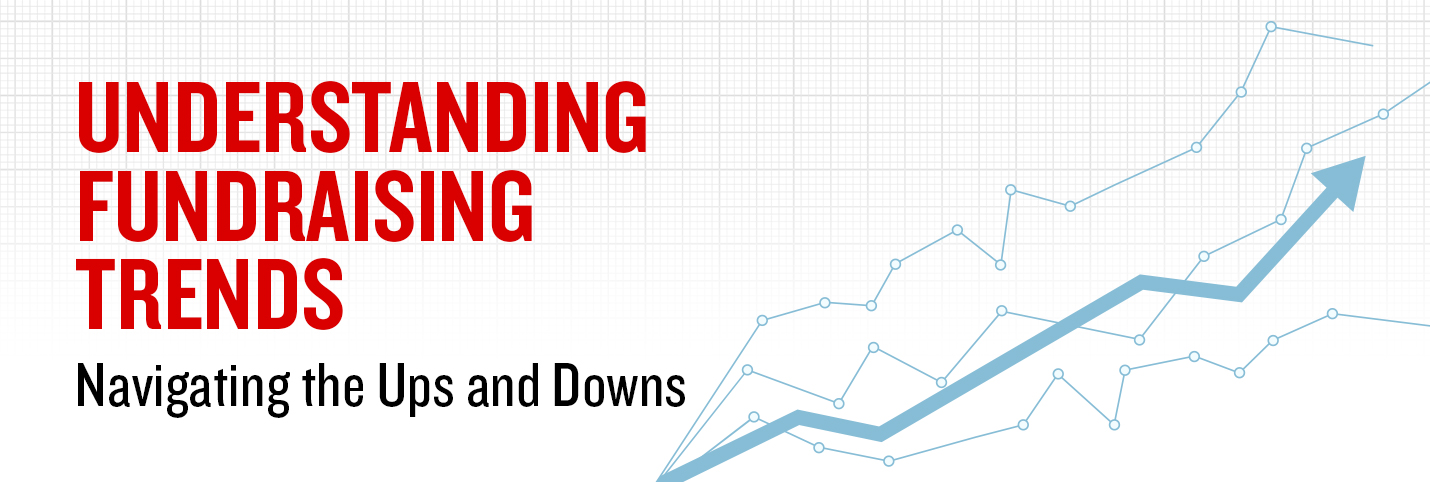Understanding Fundraising Trends: Navigating the Ups and Downs
The years 2020 and 2021 were nothing short of remarkable for many nonprofits, especially those dedicated to supporting communities facing great need.
With an outpouring of support from compassionate donors, these two years resulted in record-breaking levels of income, making a significant impact on countless lives. However, the transition to 2022 brought with it concerns about sustainability for many nonprofits as they began to witness a decline in revenue from the prior two years. In fact, Giving USA, a trusted source in the nonprofit sector, identified a decline of 3.4% in total giving, while giving by individuals decreased by 6.4% in 2022. The Fundraising Effectiveness Project echoed this viewpoint, revealing a 10% decrease in the number of donors compared to the previous year and a 1.7% drop in dollars given when comparing 2022 to 2021.
But upon closer examination of the broader context and prevailing industry trends, a more nuanced perspective emerges.
While these benchmarks offer informative insights, it is equally important to compare this data with our own historical performance. By doing so, we can better recognize any anomalies that may have influenced the trends.
To gain a comprehensive understanding, let’s focus on key year-over-year metrics:
Total Income: Tracking total income over time offers valuable insights into the effectiveness of our fundraising efforts. Understanding the fluctuations can help inform our strategies for the future.
Total Active Donors: Monitoring the number of donors who contributed in a given calendar year allows us to measure the engagement and growth of our donor base.
Donor Retention: Measuring the percentage of donors who gave in the previous year and continued their support in the current year reveals the strength of our donor relationships and the level of satisfaction with our organization.
Donor Second-Year Giving: This metric indicates the percentage of donors who gave their first gift in the previous year and continued their support in the subsequent year. It highlights the success of our donor acquisition strategies.
Visualizing these data points on a graph helps us uncover trends and patterns that might not be immediately evident. Many of the organizations we serve witnessed apparent decreases in giving and donors in 2022. However, a more comprehensive analysis of the past five years reveals a positive perspective.
Comparing the performance to the pre-pandemic year of 2019, we find that these organizations remained significantly above their pre-2020 levels. So, the declines experienced in 2022 can ultimately be seen as a normalizing effect after the extraordinary surges of the previous two years.
Despite the challenges of 2020 and 2021, growth for the above organizations was still under way. It’s essential to remember that our journey as fundraisers is filled with ups and downs. Embracing the rollercoaster ride with optimism allows us to stay focused on the long-term impact we can make.
Additionally, there has been speculation about the behavior of donors acquired or reactivated during the COVID years—specifically that it’s episodic or emergency driven. However, our in-depth analysis for one organization paints a different picture:
Donors Acquired in 2020 were retained in their second year at a 6% higher than average rate.
Donors Reactivated in 2020 were retained in their second year at a 4% higher than average rate.
And as we continue to monitor these donors in subsequent years, their giving trends remain in line with donors acquired before or after the “COVID” bump. This data emphasizes the loyalty and dedication of these donors, debunking the notion that they behave differently in their support.
As we continue on our fundraising journey, let’s remember that acknowledging subtle shifts within the broader context fosters an informed and optimistic approach. By meticulously studying both industry dynamics and our organizational narrative, we enhance our ability to endure change and positively impact the lives of those we serve.









